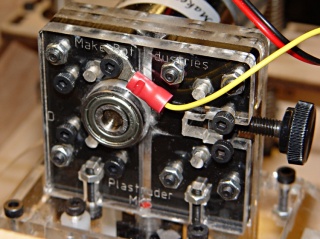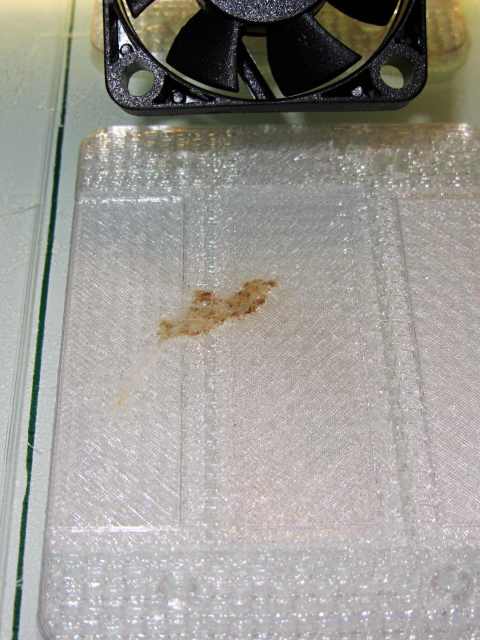CCVirginia wrote:ground the printer
Been there, done that, long ago:
https://softsolder.com/2011/01/09/thing ... c-control/

Didn't make any difference I could detect, but the Thing-O-Matic was a relentlessly unreliable plywood box, so it's kinda hard to say.
Anyhow, that's almost certainly not the problem with your M2, particularly given that you're printing with PETG and booger collisions explain all the symptoms.
Basically, the mean-time-to-failure for consumer-grade printers seems to be on the order of 10 hours (*), with the M2 on the high end of that range:
something will go wrong twice a day. Windows will crash / disconnect, the SD card will fail with a spurious read error, the AC power will drop out for a few seconds, the filament will tangle, or, hey, it could be a static discharge. Point is,
you will never be able to prevent all the problems and the likelihood of success goes down exponentially with operating time.
This is not an easy part to break into pieces
Redesigning it for success seems much easier than blowing two days on every failed iteration from now until you give up playing whack-a-mole with an endless succession of
different problems, but I'll admit to a certain degree of fatalism.
Think of 3D printing as a production process, not a miracle. As with any CNC machine, you
must design your parts with the machine's limitations in mind; you wouldn't expect a simple 3-axis milling machine to produce a complete engine block in one operation, right?
Some folks have successful tens-of-hours prints, but that's a losing gamble: it'll work once in a while, but not often enough to make the failures worthwhile.
Chop that thing up, bolt the parts back together, and get on with it…
(*) Edit -- Some anecdata arrived overnight:
"I was about 10 hours into a 20 hour print, and sparks just shot out of my extruder"
viewtopic.php?f=7&t=5327
"There is nothing worse than having your 8 hour dual colour print ruined while your computer decides that it has something more important to do"
viewtopic.php?f=10&t=5326
